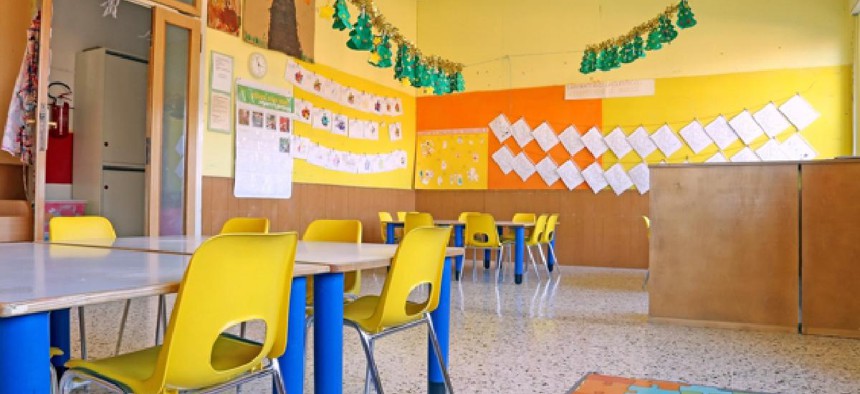New overtime regulations cause confusion for early-childhood service providers

While nonprofit organizations across New York are preparing to comply with a U.S. Department of Labor regulation that will widen the threshold for employees who can qualify to earn overtime pay, questions remain among early-childhood service providers about which workers will be affected.
While those working more than 40 hours per week at some nonprofit early-childhood education centers – widely acknowledged as some of the lowest-funded social services providers in the city – could be eligible to be paid extra, many frontline teachers and administrators will remain exempt from the protections. Figuring out who qualifies requires parsing some very nuanced definitions that are causing some confusion throughout the sector.
Michael West, a senior attorney at the New York Council of Nonprofits, said that after the federal regulations were released last month, calls to NYCON’s hotline tripled, with the vast majority of questions related to the rule changes. “When it first came out, I was hoping it was going to be all cut and dry and literally by the day we’re realizing this is more nuanced and that’s more nuanced,” he said, adding that it would likely take several years to be fully confident about which organizations are subject to the regulations. The group published a guide to help organizations determine how to react to the rules.
Once they take effect Dec. 1, the new guidelines will generally affect salaried employees who earn less than $47,476 annually. That is double the current benchmark set by the federal government, though New York State’s ceiling for executive and administrative workers had been set somewhat higher, at $35,100.
But prekindergarten through high-school teachers “in the activity of imparting knowledge” fall under a “professional exemption” to the Fair Labor Standards Act that also includes doctors and lawyers. As a result, at some early-childhood education centers, the overtime regulations could apply to caregivers, bookkeepers and executive directors, but not to licensed teachers, according to West.
“It’s great for folks that really are due overtime that are suddenly going to start to receive it,” he said. “For daycare, it might be a big burden: they’re already overtaxed and I can see the potential for chaos. Within the nonprofit sector, daycare will be the biggest hit.”
There are some provisions limiting the regulations to some nonprofits that earn more than $500,000 in sales each year. But all hospitals, schools, and businesses providing medical or nursing care are subject to the new regulations, as are employees at other nonprofits that engage in “interstate commerce.” (The U.S. Public Interest Research Group, a federation of consumer-interest groups, questioned that portion, saying that it can apply to any employee who regularly uses the internet or email, makes phone calls or writes letters.)
West said that federal regulators drew up many of the rules on the assumption that some of the most prestigious affected institutions could tap into other financial and philanthropic resources to cover costs. About 982,000 workers in New York will benefit directly from the regulation, according to the Economic Policy Institute, which released a letter of support signed by more than 110 nonprofits, political groups and unions.
However, daycare centers and other nonprofits that contract with the government sometimes have the fewest resources from which to draw. In New York City, pre-K educators at private and nonprofit-run centers earn less on average than their colleagues holding the same qualifications who work for the city Department of Education, a differential that can amount to as much as $17,000 annually.
Though some facilities are short-staffed, a spokesman for the Council of School Supervisors and Administrators, a union that represents directors and assistant directors, said centers tend to stagger working hours to avoid scheduling overtime.
The Human Services Council offered cautious support for the changes in a position paper that said that while pay increases were overdue for thousands of underpaid workers, it could “destabilize” the social-services sector without more government grants to meet the payroll challenge. A quarter of nonprofits in 2014 said offering competitive pay and retaining staff were top challenges according to Nonprofit Finance Fund statistics cited by HSC.
The contracts might determine whether they can get paid for any overtime increases from the city, according to Nilesh Patel, the director of labor and mediation for the Day Care Council of New York, which represents operators of more than 320 early-childhood education centers. For example, a contract based only on flat enrollment numbers may make it tougher to make up for increased outlays than a contract that largely reimburses contractors for costs.
Patel said that of the 3,000 workers at centers represented by the council, roughly 170 educational directors and 650 teachers with master’s or bachelor’s degrees will be exempt from the rule.
So far, one of the biggest challenges might be determining who counts as a teacher under the rules, Patel said. Unlike older grades, where educators’ roles are more delineated, it’s harder to determine how much of a staffer’s day is spent teaching.
“With preschool, you get into, ‘Is the person a teacher, or is it a mix of teaching and taking care of the physical needs of a child?’ And if it’s a mixed bag, it gets harder to get the exemption,” said Patel.